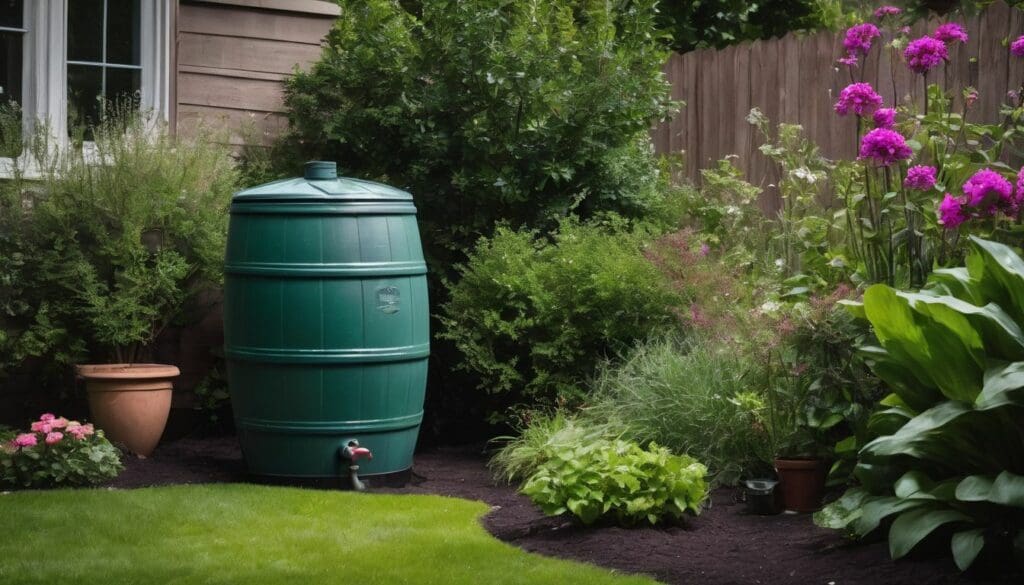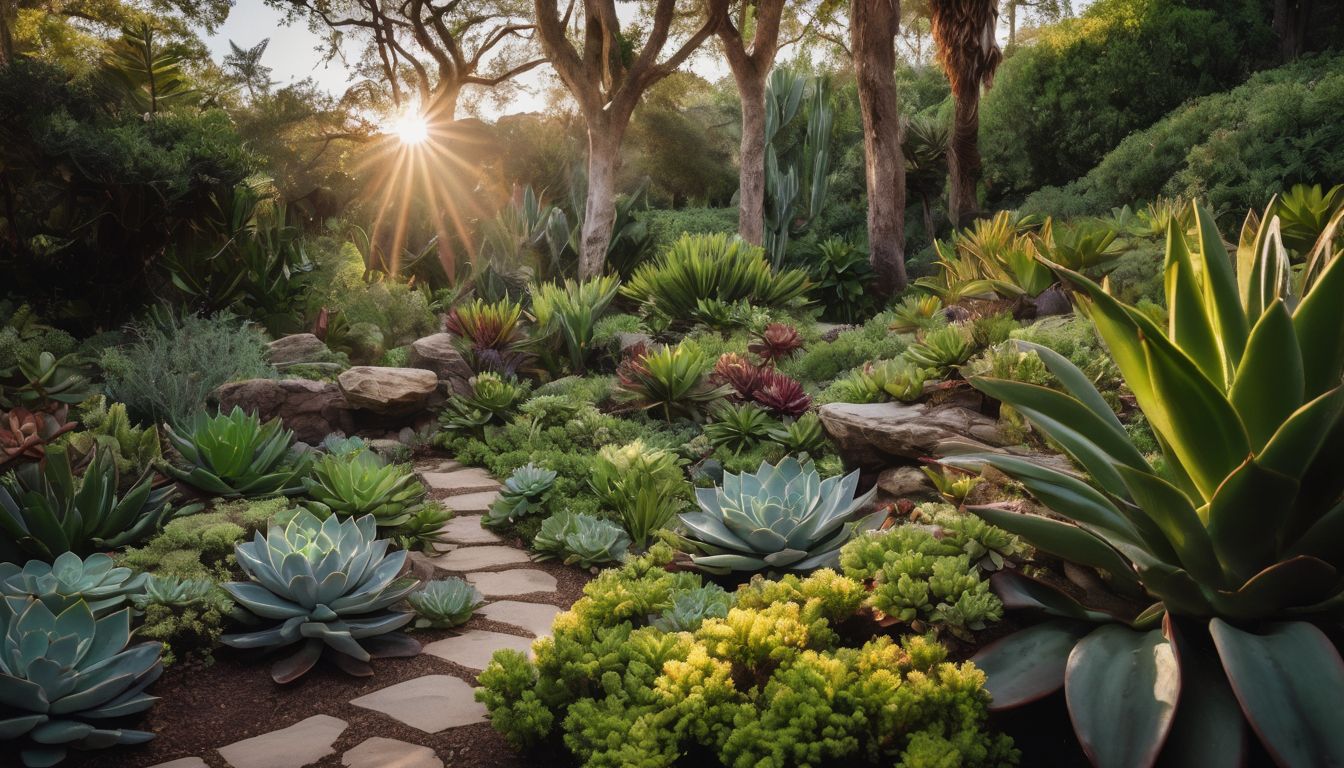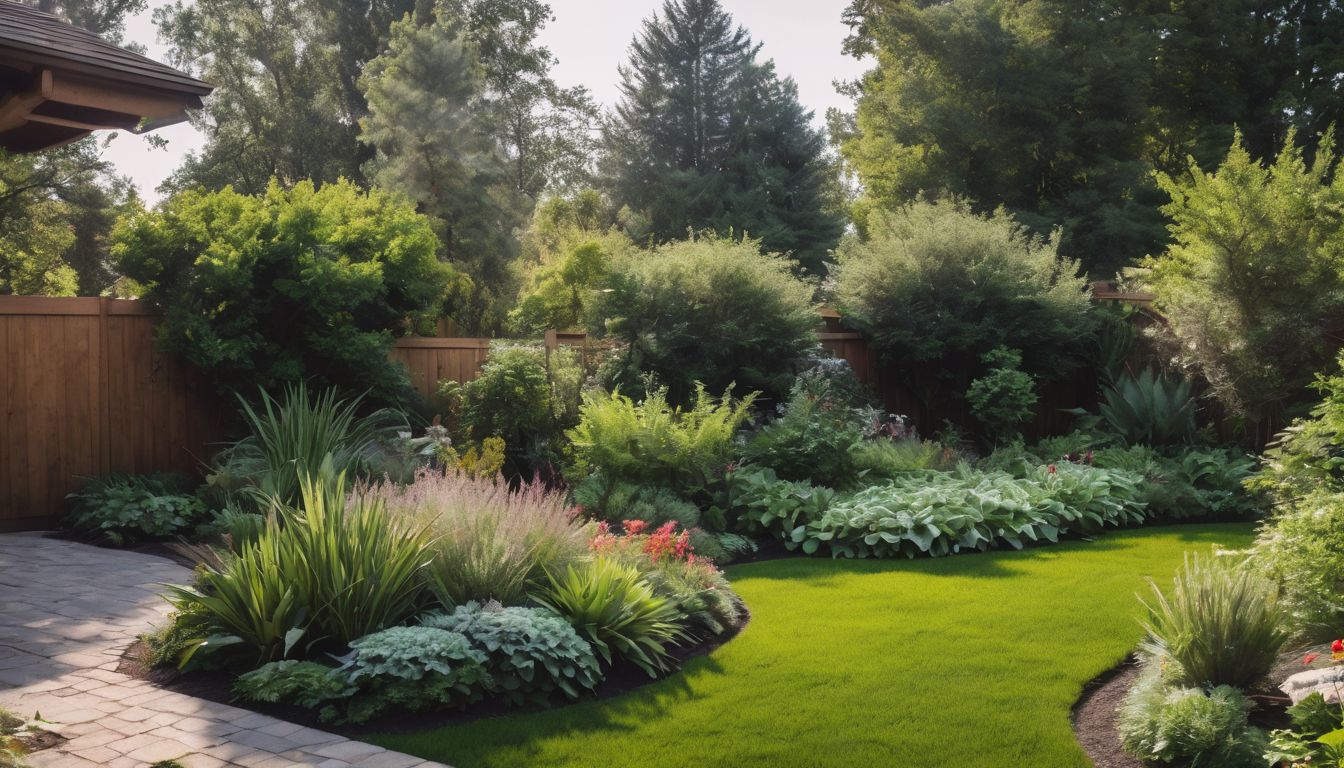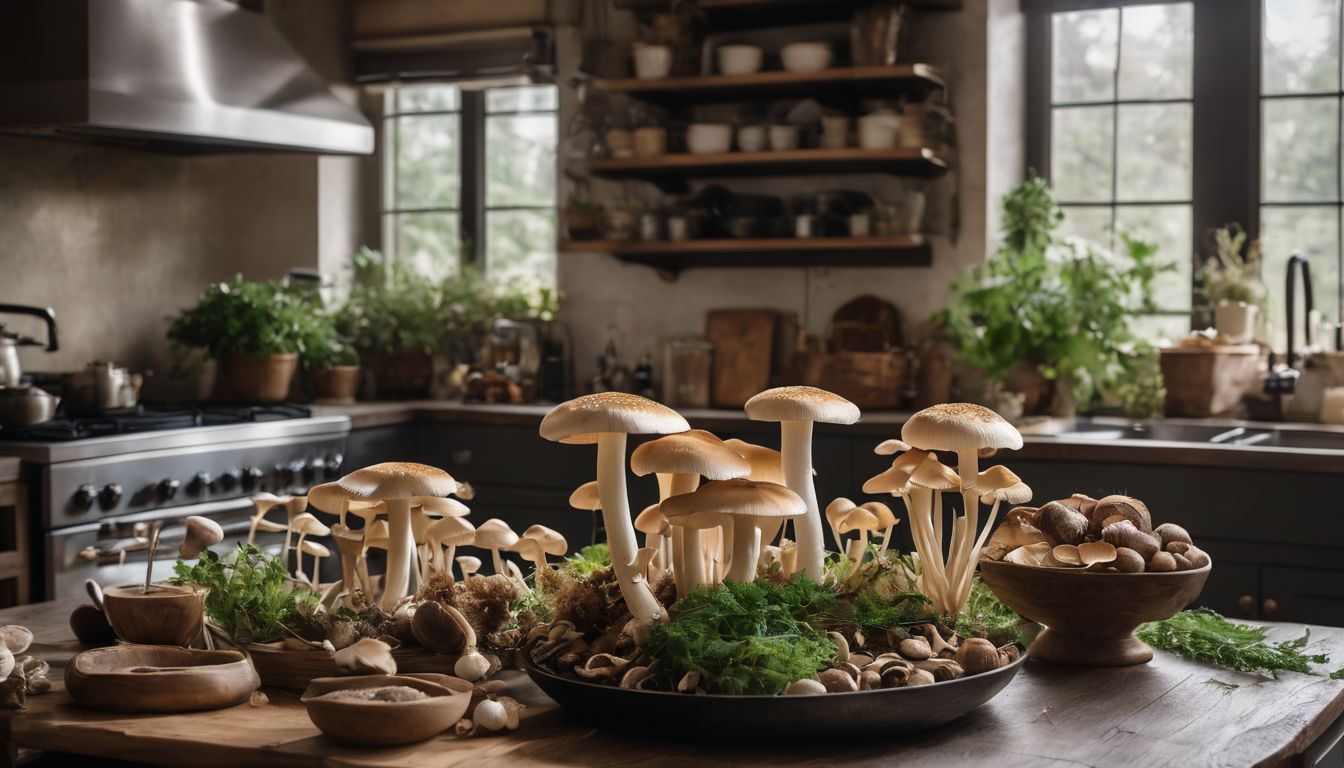As summer rolls in, keeping gardens lush and hydrated becomes a costly challenge. Capturing rainwater using a barrel could slash your water bills by half. Our guide will illustrate the perks of installing a rain barrel, ensuring your garden thrives economically and sustainably.
Dive into savings and serenity with us!
Key Takeaways
- Installing a garden rain barrel reduces water bills by collecting free rainwater, which is healthier for plants due to its natural nutrient content.
- Rain barrels can conserve precious water during dry periods and droughts, supporting eco-friendly living and sustainable gardening practices.
- By capturing rainwater, these barrels minimise harmful stormwater runoff and protect local ecosystems from flooding and pollution.
- Using collected rainwater for tasks like watering indoor plants or washing cars promotes conservation of treated water supplies and energy resources.
- Garden rain barrels are easy to set up next to downspouts, require simple maintenance, and offer versatile uses beyond just watering the garden.
Benefits of Rain Barrels for Garden
Rain barrels save money on water bills and provide clean, nutrient-rich water for plants. They also help conserve water during droughts and reduce stormwater runoff, preventing flooding and erosion in your garden.
Saves money on water bills
Using a water butt can significantly reduce your garden’s demand for municipal water, leading to lower monthly water bills. Collecting and using rainwater for your plants rather than relying on tap water is both eco-friendly and economical.
As you harvest this free resource from the skies, you’re not just contributing to sustainable gardening practices; you’re also cutting costs.
Incorporating a water butt into your garden irrigation routine taps into the wisdom of water conservation. By utilising nutrient-rich rainwater collected during showers, you nurture your plants without opening your wallet.
This simple step towards self-sufficiency in managing your garden’s hydration needs ensures that every drop counts – both environmentally and financially.
Conserves water during drought
Rain barrels provide an efficient way to conserve water, especially during droughts. By collecting rainwater, they offer a sustainable supply for gardens and landscapes without over-relying on traditional water sources.
This eco-friendly practice not only contributes to sustainable water use but also helps in maintaining green living practices. Drought-resistant plants, when nourished with harvested rainwater are better equipped to thrive in conditions of limited water availability, making the garden more resilient.
These benefits make rain barrels an invaluable tool for environmentally conscious individuals looking for simple ways to support conservation efforts and adapt their landscaping for improved environmental sustainability.
Reduces stormwater runoff
By collecting rainwater in a garden barrel, you can reduce stormwater runoff. This helps to alleviate pressure on local drainage systems and minimises the risk of flooding in your area.
Additionally, by diverting rainwater into a rain barrel, you are preventing excess water from carrying pollutants and debris into local water bodies, thereby contributing to cleaner ecosystems overall.
Managing stormwater runoff is crucial for maintaining the health of our environment. Collecting rainwater with a garden barrel is an effective way to play a part in this essential process.
Prevents flooding and erosion
Rain barrels prevent flooding and erosion by capturing rainwater from downpipes, reducing the volume of stormwater runoff. This helps to manage water flow and prevents excess water from overwhelming drainage systems, which can cause erosion and flooding.
By slowing down the movement of rainwater from hard surfaces into natural waterways, rain barrels provide an effective way to mitigate the impact of heavy rainfall on local ecosystems while also contributing to flood prevention efforts.
The use of rain barrels effectively reduces the amount of stormwater flowing over impermeable surfaces such as driveways, pavements, and roofs. As a result, this lessens the risk of soil erosion and minimises potential damage caused by flash floods during heavy rainfall events.
Provides clean water for plants
Rain barrels provide a sustainable water source for watering plants, offering an eco-friendly alternative to tap water. The collected rainwater is free from the chemicals found in treated water and serves as nutrient-rich hydration for your garden.
This DIY water collection method not only reduces strain on local water supplies but also promotes environmental sustainability through efficient use of natural resources.
The nutrient-rich rainwater gathered in the barrel ensures healthier plant growth while reducing demand for energy-intensive treatment processes. By harnessing this natural resource, you can support eco-friendly landscaping practices and maintain drought-resistant plants without compromising on quality or cost-effectiveness.
Improves plant and soil health
Providing clean water for plants ensures that they receive the necessary nutrients for growth. This nutrient-rich water benefits both plant and soil health, contributing to vibrant and lush gardens.
Rainwater also helps in maintaining the natural pH levels of the soil, promoting healthy root systems and overall plant vitality. Nutrient-rich rainwater encourages robust foliage, vibrant blooms, and strong, resilient plants capable of withstanding environmental stressors such as droughts.
The improved health of plants and soil further supports eco-friendly landscaping practices while fostering a sustainable garden environment. These benefits align with the goals of environmentally conscious individuals seeking to support conservation efforts through practical means like rain barrel usage.
Simple Steps to Set Up a Rain Barrel for Your Garden
Choose the right location for your rain barrel, ensuring it is close to a downspout for easy installation. Once installed, connect the barrel to the downspout and use a filter to ensure clean water for your plants.
Regular maintenance and cleaning of the barrel will keep it functioning effectively.
Choose the right location
Select a location for your rain barrel that receives ample rainfall and is near a downspout. Ensure that the site is flat, stable, and able to support the weight of a full barrel. It should be close enough to your garden or plants so that you can easily water them using the harvested rainwater.
Look for an area that won’t obstruct foot traffic or cause inconvenience. Consider placing it in an inconspicuous spot if aesthetics are a concern.
Now let’s move on to “Install the barrel” to continue setting up your rain barrel system effectively.
Install the barrel
Position the rain barrel beneath a downpipe to catch the water. Use a stable and level surface, ensuring the tap remains accessible. Secure it in place to prevent tipping over or shifting during heavy rainfall, allowing for easy access when using the collected water.
Once in position, inspect for any leaks or defects before connecting it to your garden’s irrigation system.
To connect your rain barrel to a downpipe, carefully cut and remove a section of the downpipe near its top. Install an elbow joint on this opening and direct it towards the opening at the top of your barrel.
Ensure that you can easily detach it if necessary for cleaning or maintenance purposes.
Connect to a downspout
After installing the rain barrel in the right location, the next step is to connect it to a downspout. This process allows the barrel to collect and store rainwater efficiently for your garden needs.
Use a downspout diverter kit or a simple hose attachment to divert water from the downspout directly into the rain barrel. By doing this, you’ll ensure that rainwater flows seamlessly into your new eco-friendly water source rather than being wasted through runoff.
Once connected to a downspout, you can start harnessing rainfall as a sustainable and cost-effective way of watering your garden and reducing strain on local water supplies.
Use a filter
Once you have connected your rain barrel to a downspout, it’s important to use a filter to ensure that the water collected is clean and free from debris. By using a filter, you can prevent leaves, twigs, and other contaminants from entering the barrel.
This ensures that the water you collect is of high quality, making it safe for your plants and soil. Additionally, using a filter helps prolong the lifespan of your rain barrel by preventing clogs and blockages.
Regularly cleaning and maintaining the filter will guarantee that it continues to work effectively in keeping your collected water clean. This simple step not only contributes to eco-friendly practices but also supports efficient water management in your garden.
Maintain and clean the barrel
To ensure the continued effectiveness of your rain barrel, regular maintenance and cleaning are essential. Trapped debris, sediment, or algae can hinder water flow and contaminate the stored water.
Inspect the barrel periodically for any blockages and clean them out with a brush or hose to maintain uninterrupted water collection. Additionally, use a mild soap solution to scrub the inside of the barrel before rinsing thoroughly at least once a year to keep it free from bacteria and pollutants.
Regular maintenance is crucial in preserving water quality and preventing clogging issues that may affect your garden’s health. Keeping your rain barrel clean not only safeguards plant life but also upholds its eco-friendly benefits in conserving natural resources and reducing runoff pollution.
Other Uses for Rain Barrels
In addition to watering your garden, rainwater from the barrel can also be used for washing your car, cleaning outdoor areas, and mopping floors. This helps to reduce water usage and supports eco-friendly practices.
Watering indoor plants
Watering indoor plants with rainwater collected in a barrel benefits both the environment and your plants. The nutrient-rich water from rain barrels can promote healthier growth in potted plants, as it lacks the chemicals found in tap water.
By using harvested rainwater, you reduce demand on local water supplies, supporting eco-friendly practices and conserving resources. Furthermore, incorporating this sustainable method aligns with environmentally conscious individuals’ commitment to reducing pollution from runoff and embracing cost-effective strategies for watering indoor greenery.
Ensuring that indoor plants receive nourishment from clean rainwater also promotes a more natural approach to plant care. By utilising harvested rainwater for watering houseplants, you support drought-resistant landscaping and contribute to minimising strain on energy-intensive water treatment processes – an essential element of environmentally friendly landscaping initiatives.
Washing your car
Using rainwater from your garden barrel to wash your car can reduce your water consumption and help protect the environment. Harvesting rainwater for this purpose is an eco-friendly practice that conserves water, reduces strain on local water supply, and minimises pollution from runoff.
By utilising nutrient-rich rainwater to clean your car, you are promoting sustainability and supporting water efficiency in a cost-effective manner.
When it comes to washing your car with harvested rainwater, you not only contribute towards environmental benefits but also demonstrate responsible and eco-friendly practices. Conserving resources while maintaining a clean vehicle not only saves money but also protects the environment for future generations.
Cleaning outdoor areas
After using rainwater to wash your car, you can use it for cleaning outdoor areas as well. Rain barrel water is eco-friendly and free from harmful chemicals, making it perfect for washing patios, decks, and outdoor furniture.
This nutrient-rich water also provides a natural alternative for gently cleaning garden tools, bird baths, and even pet enclosures.
Utilising rain barrel water for cleaning outdoor areas supports eco-friendly practices while reducing the demand on local water supplies. By incorporating this sustainable approach into your routine maintenance tasks, you’re contributing to environmental conservation and promoting the use of drought-resistant plants within an eco-friendly landscaping framework.
Mopping floors
When using rainwater from a garden water butt, you can use it to mop floors in your home. Simply collect the water and mix it with eco-friendly floor cleaner for an effective and sustainable cleaning solution.
This helps reduce your reliance on tap water, conserves local water resources, and minimises the environmental impact of traditional cleaning products.
Using nutrient-rich rainwater also promotes healthier plant growth in your indoor and outdoor gardens while reducing demand on public utilities. By incorporating such eco-friendly practices into your daily routine, you are actively contributing to drought resistance, cost savings, and overall environmental conservation efforts within your community.
Environmental Benefits of Rain Barrels
Rain barrels reduce strain on local water supply, decrease demand for energy-intensive water treatment, and minimise pollution from runoff. They are a simple yet effective way to support eco-friendly practices and contribute to sustainable landscaping.
Reduces strain on local water supply
Rain barrels reduce strain on the local water supply, helping to alleviate demand during dry spells. By collecting rainwater, this eco-friendly practice lessens the need for tapping into municipal water sources, especially in times of drought.
Implementing rain barrels not only conserves water but also promotes sustainable and responsible management of our natural resources.
Harvesting rain to nourish plants and landscapes benefits both the environment and communities by reducing reliance on treated water supplies while supporting eco-friendly landscaping practices.
Reduces demand for energy-intensive water treatment
By reducing strain on the local water supply, using a rain barrel can significantly reduce the demand for energy-intensive water treatment. Rainwater collected in barrels is relatively clean and free from many of the impurities found in tap water.
By utilising this natural resource to water plants and gardens, individuals can decrease their reliance on treated water, which in turn reduces the workload on energy-intensive water treatment facilities.
This eco-friendly practice not only conserves precious resources but also contributes towards a more sustainable and environmentally responsible approach to water management.
The use of rain barrels directly lessens the need for extensive processing at treatment facilities. As a result, it effectively minimises not just energy usage but also pollution generated by traditional treatments.
Reduces pollution from runoff
By reducing demand for energy-intensive water treatment, garden rain barrels also play a vital role in reducing pollution from runoff. When rainwater is collected and used for gardening purposes, it prevents harmful pollutants from flowing into local waterways.
This eco-friendly practice helps maintain the quality of our water sources, benefiting both the environment and surrounding ecosystems.
In addition to conserving water and saving money, utilising garden rain barrels significantly reduces the amount of pollution entering our water systems through runoff. This simple yet effective approach promotes sustainable landscaping while contributing to the preservation of clean and nutrient-rich water resources.
Conclusion
In conclusion, garden rain barrels offer a variety of benefits for environmentally conscious individuals. They save money on water bills and help conserve water during droughts. By reducing stormwater runoff, they prevent flooding and erosion while providing clean water for plants and improving overall plant and soil health.
Setting up a rain barrel is simple, and it can be used for various purposes like watering indoor plants, washing your car, or mopping floors. Overall, incorporating a garden rain barrel into eco-friendly landscaping practices contributes to managing water runoff in an environmentally friendly way.
FAQs
1. What is a garden rain barrel?
A garden rain barrel is a container that catches and stores rainwater from your roof, which you can use for watering plants and eco-friendly landscaping.
2. How does using a garden rain barrel help the environment?
Using a rain barrel reduces water runoff, saves nutrient-rich water for your drought-resistant plants, and promotes eco-friendly practices in managing resources.
3. Can I use the water from my rain barrel on all my plants?
Yes, the collected rainwater harvesting in your garden’s barrel is ideal for all types of plants because it’s typically free from chlorine and may help them grow better.
4. Will a rain barrel save me money?
Absolutely! A rain barrel collects free water when it rains, helping you cut down on tap water usage for your outdoor needs—a smart move towards an ecofriendly home.





